Vietnamese traditions and culture blend indigenous customs, spiritual beliefs, and historical influences—especially from China and India. Rooted in daily life, they emphasize ancestor worship, respect for elders, communal meals, and strong family ties. From celebrations like Tet and the Mid-Autumn Festival to spiritual practices such as pagoda visits and folk beliefs, Vietnamese culture remains deeply alive. Art forms like water puppetry and silk painting showcase its identity, while rituals honoring ancestors and the Hung Kings preserve its heritage.
Learn about Vietnamese culture: The Dos & Don’ts
Vietnamese cultural identity is rich, not in gold or jewels, but in the quiet strength of family ties, in the scent of incense curling up from ancestral altars, and in the way stories are passed down over bowls of hot noodle soup. It is a richness that doesn’t shout, but lingers – in the rhythm of village festivals, the formality of a respectful greeting, and the balance between past and present that defines daily life. To walk through Vietnam is to move through layers of history, memory, and meaning—each one stitched carefully into the cultural fabric of the nation. Now, let’s begin exploring Vietnam’s traditions that continue to shape its soul today.
- Check out Vietnam luxury tours
18’s Etiquette, Culture, and Traditions Of Vietnam
1. The Diverse Ethnicity in Vietnam
Vietnam is home to 54 ethnic groups, each with its own language, customs, and traditions. While the Kinh people make up the majority and often live in urban and lowland areas, many other ethnic communities, such as the Tay, Hmong, Dao, Thai, and Cham, live in the mountains, forests, and coastal regions. These groups bring vibrant diversity to Vietnamese culture, from colorful festivals and traditional clothing to unique music, dance, and farming practices. Despite differences, there is a strong sense of unity. Together, these ethnic groups weave a beautiful cultural mosaic that gives Vietnam its deep soul and timeless charm.
2. Traditional Costumes
Vietnamese traditional costumes reflect the country’s elegance, history, and regional identity. The most iconic is the ao dai, a long, flowing dress worn over trousers, known for its graceful silhouette and often made of silk with delicate patterns. Worn on special occasions like festivals, weddings, or school events, the ao dai symbolizes beauty and modesty, especially for women.
Across ethnic groups, traditional clothing varies, like the colorful embroidery of the Hmong, the indigo-dyed skirts of the Dao, or the bright headscarves of the Thai people. Each costume tells a story of heritage and pride, turning everyday life into something quietly beautiful.
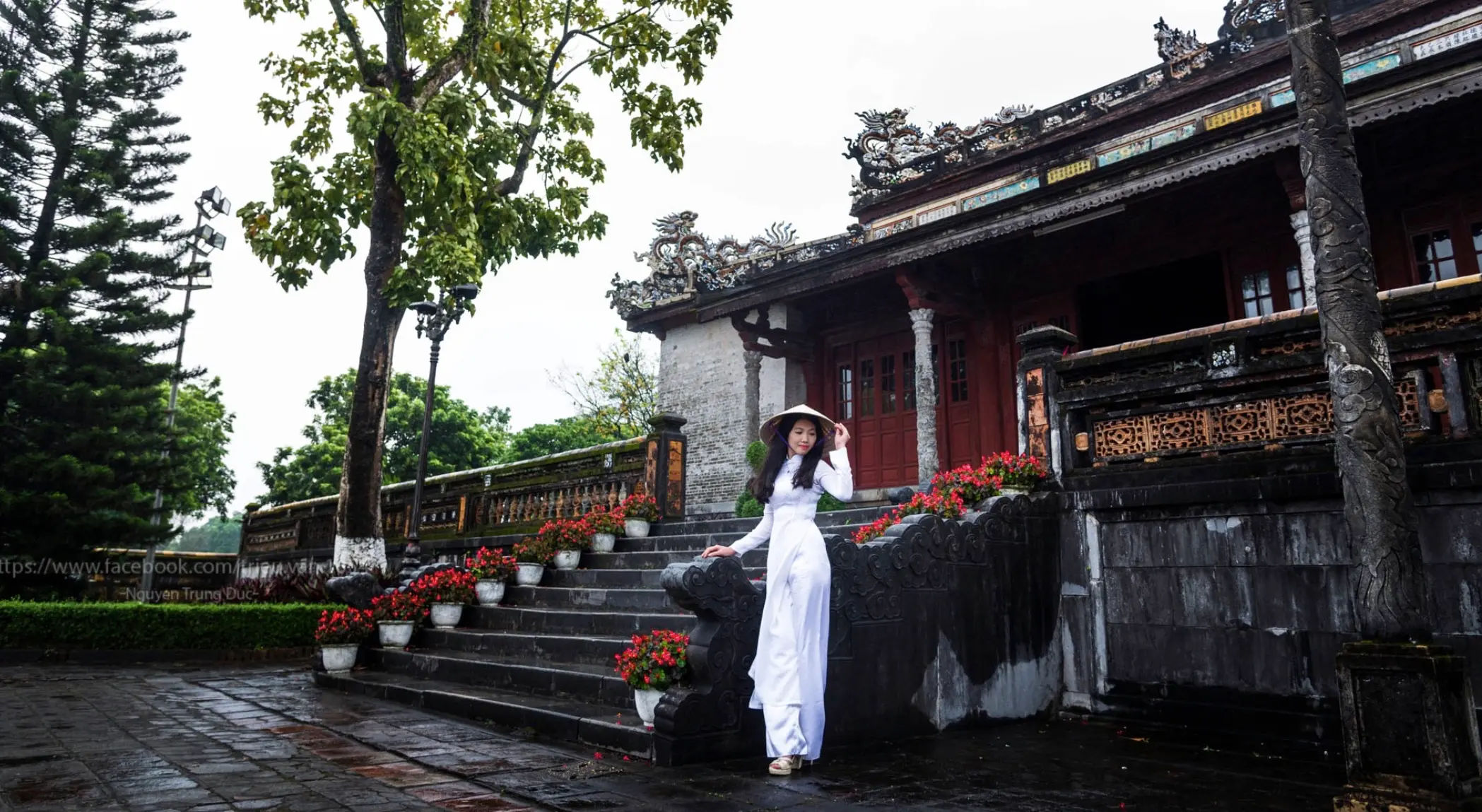
3. Cuisine across the country
Vietnamese cuisine is a celebration of life – fresh, vibrant, and deeply rooted in tradition. From early morning noodle soups to late-night snacks on bustling sidewalks, every meal brings people together. Dishes like pho, spring rolls, bun cha, and broken rice are made with simple ingredients but rich in flavor, always balanced between sweet, salty, sour, and spicy. And beyond the food, there’s the strong, fragrant Vietnamese coffee – slow-dripped and served with condensed milk, a daily ritual cherished across the country. In Vietnam, eating is not just about feeding the body, but also sharing stories, laughter, and love.
4. Language
Vietnamese is the official language spoken by most of the population, but it’s only part of the country’s linguistic picture. With 54 ethnic groups, Vietnam is home to dozens of dialects from different regions – Tay, Hmong, Khmer, Cham, and more – each tied to a unique way of life. While Vietnamese is used in education and daily communication, many communities still speak their native tongues at home, in rituals, and during festivals.
This rich blend of languages reflects Vietnam’s deep cultural diversity and the effort to preserve heritage across generations.
5. Ancestor Worship
Ancestor worship is a deep-rooted tradition in Vietnam, reflecting the belief that the spirits of the deceased continue to watch over the living. Most families keep an altar at home, where they offer incense, fruits, and cooked food to honor their ancestors, especially during festivals like Tet. Votive paper, shaped like money, clothes, or even houses, is burned as a symbolic gift to the spirit world. Alongside ancestors, many households also worship deities like the God of Wealth or the Earth God, asking for protection, health, and prosperity. These daily acts of devotion connect generations and keep family ties alive, even across time.
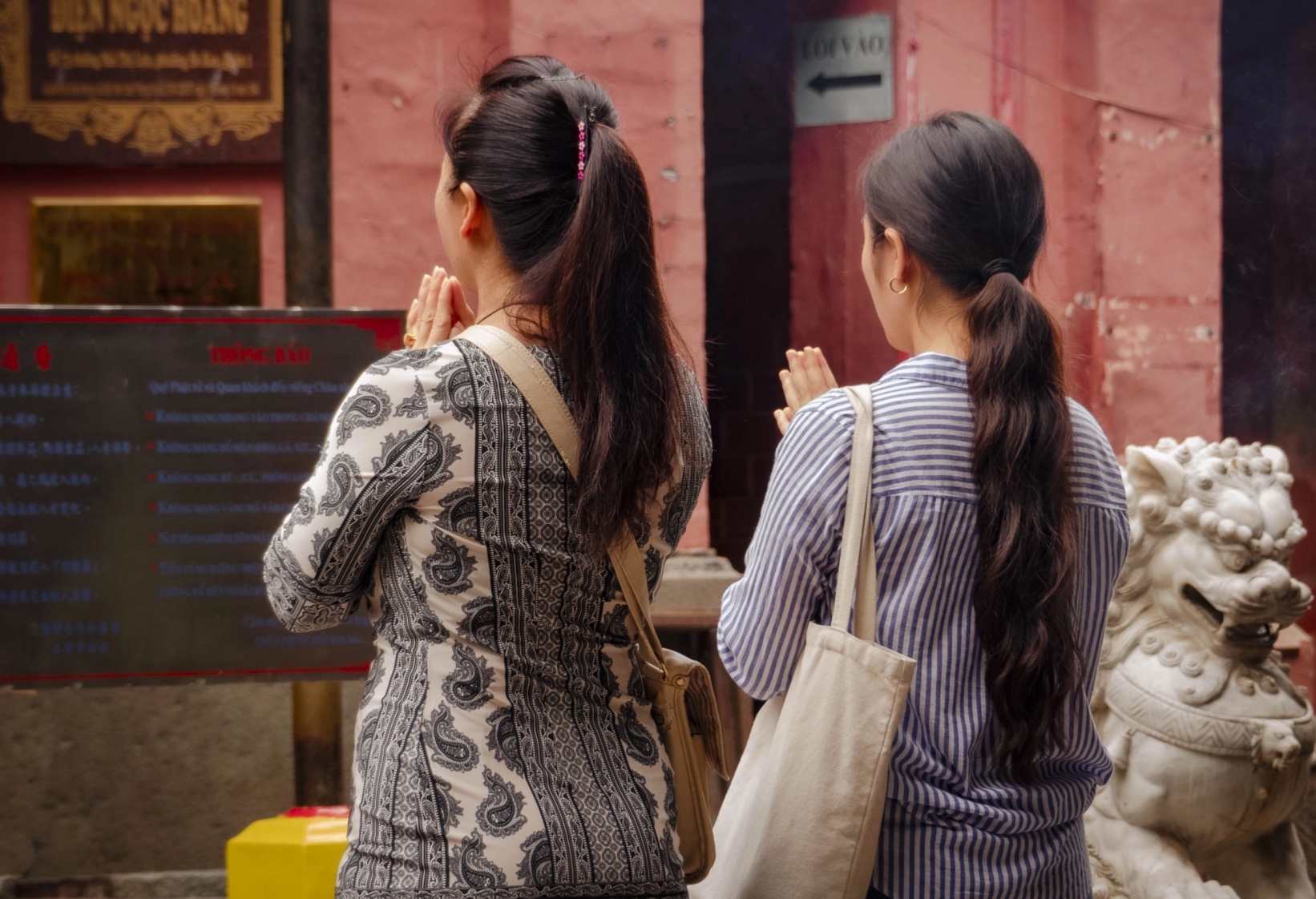
6. Religion and Philosophy
Vietnamese religion and philosophy are shaped by a blend of Buddhism, Confucianism, and Taoism – often called the “Three Teachings”. This harmony guides moral values, family life, and spiritual practices. Buddhism, the most visible faith, emphasizes compassion and karma, with many visiting pagodas to pray for peace and fortune. Confucianism influences respect for elders, education, and social order, while Taoism adds a belief in balance and harmony with nature. Alongside these, folk beliefs remain strong, including worship of ancestors, local gods, and nature spirits. In Vietnam, religion is less about strict doctrine and more about living with respect, balance, and connection to both past and present.
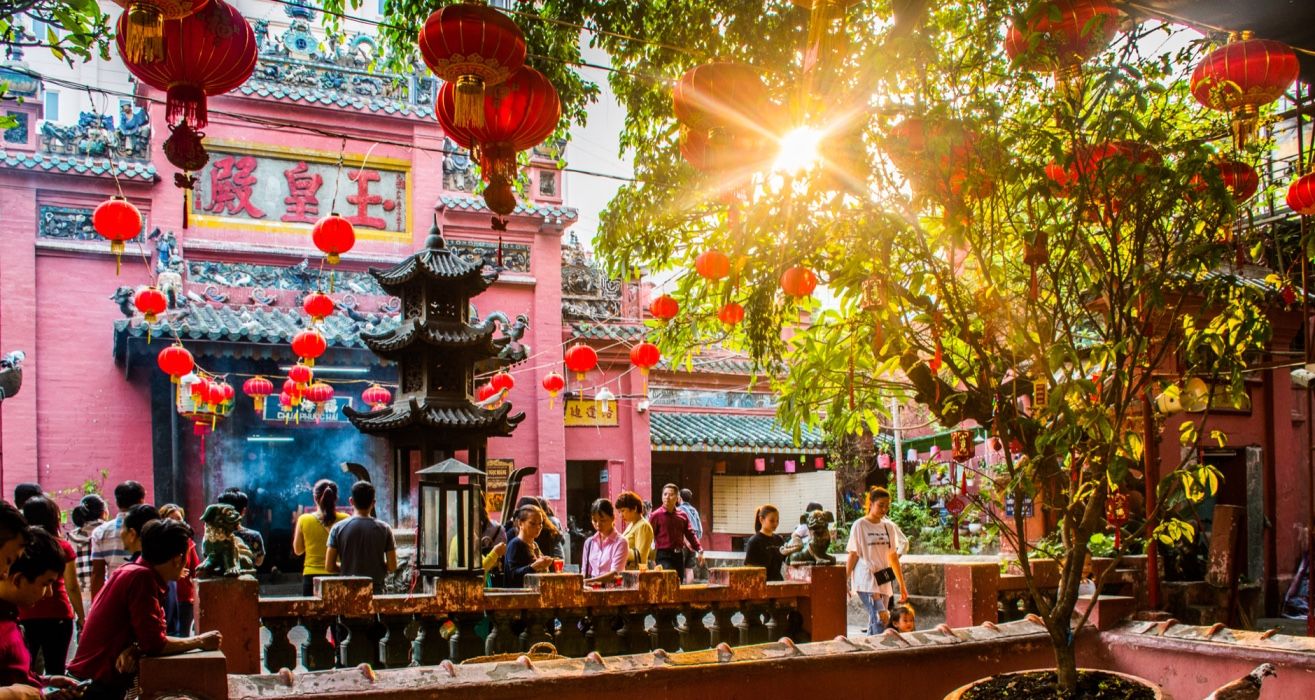
7. Value of Family
In Vietnam’s society, a typical family is not just a household, but a close-knit unit where generations live, work, and care for one another. Parents raise children with discipline and warmth, while children are expected to respect and support their elders.
Grandparents often play a vital role in childcare and passing down values, while aunts, uncles, and cousins remain closely involved. Family is also a source of identity and pride – individual choices are often guided by the well-being and honor of the whole family. Whether in daily meals or life decisions, the family remains the strongest pillar of Vietnamese culture.
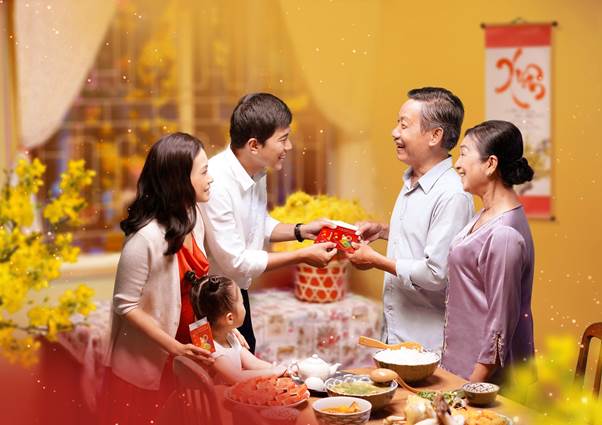
8. Literature
Vietnamese literature is rooted in oral traditions, and it began with folk tales, proverbs, and poetry passed down through generations. Later, literature was written in Chinese characters and then in chu Nom, a script developed by the Vietnamese to express their own voice. One of the most famous works is Truyen Kieu (The Tale of Kieu) by Nguyen Du, a poetic masterpiece that speaks of love, fate, and sacrifice. In the 20th century, literature shifted to modern Vietnamese using the Latin-based quoc ngu script, opening new ways to express personal and national identity.
9. Performing Arts
Vietnamese performing arts are a vibrant expression of the country’s cultural soul, blending music, storytelling, dance, and drama. Each region has its own forms – cheo (northern folk opera), tuong (classical drama), and cai luong (southern reformed theater) tell tales of love, loyalty, and justice through expressive movements and traditional music. Water puppetry, a unique northern art form, brings legends to life on water, with wooden puppets dancing to live music. Across the highlands, ethnic groups perform gong music, traditional dances, and ceremonial songs passed down through generations.
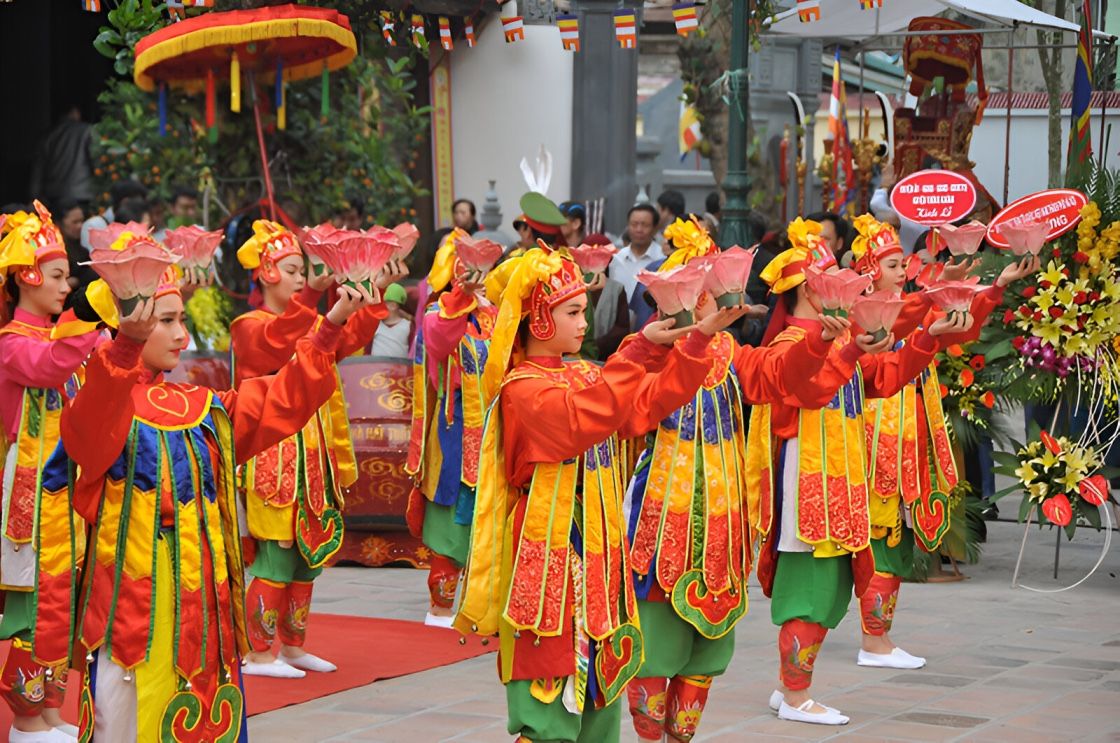
10. Music & Dance
Vietnam has a rich tradition of music and dance that reflects its diverse cultural heritage. There are over 50 traditional musical instruments, including string, wind, and percussion types – such as dan bau (monochord), dan tranh (zither), and trong (drums). Each region has its own style – northern folk songs (quan ho), central ceremonial music (nha nhac), and southern chamber music (don ca tai tu) all reflect local identity. Dance often goes hand in hand with graceful hand movements, flowing costumes, and symbolic gestures. In ethnic communities, music and dance are part of spiritual life, performed during harvests, weddings, or worship. Together, they carry the stories, hopes, and harmony of the Vietnamese people.
- Check out Vietnamese dance and music

11. Etiquette & customs
The local customs are deeply tied to community, respect, and tradition. Greetings often involve polite gestures and careful word choice, especially when addressing elders. Meals are shared and served in a way that shows care and harmony – everyone eats together, and younger people wait for elders to begin. Important life events like birth, marriage, and death follow long-standing rituals, often with offerings and family gatherings. Lunar New Year is the most important time, when customs like giving lucky money, visiting ancestors’ graves, and cleaning the home carry deep meaning.
12. Traditional Fine-art Handicrafts
Vietnam’s fine-art handicrafts reflect the skill, patience, and creativity of generations of artisans. From north to south, villages specialize in unique crafts passed down over centuries. Bat Trang is famous for its hand-painted ceramics, while Van Phuc is known for soft, shimmering silk. In Hue, artisans create delicate wood carvings and mother-of-pearl inlay, while the Mekong Delta is rich in woven mats, coconut products, and lacquerware. These crafts are often handmade using natural materials like bamboo, silk, and clay, shaped with care and meaning.
13. Visual Arts
Vietnamese visual arts have long been a reflection of the country’s history, beliefs, and daily life. Traditional painting includes silk paintings, folk woodblock prints like Dong Ho, and religious murals found in temples and pagodas. These works often feature scenes of rural life, legends, or symbols of luck and prosperity. Sculpture has strong roots in both Buddhist and folk traditions, with stone statues, bronze castings, and wooden carvings seen in ancient temples and communal houses.
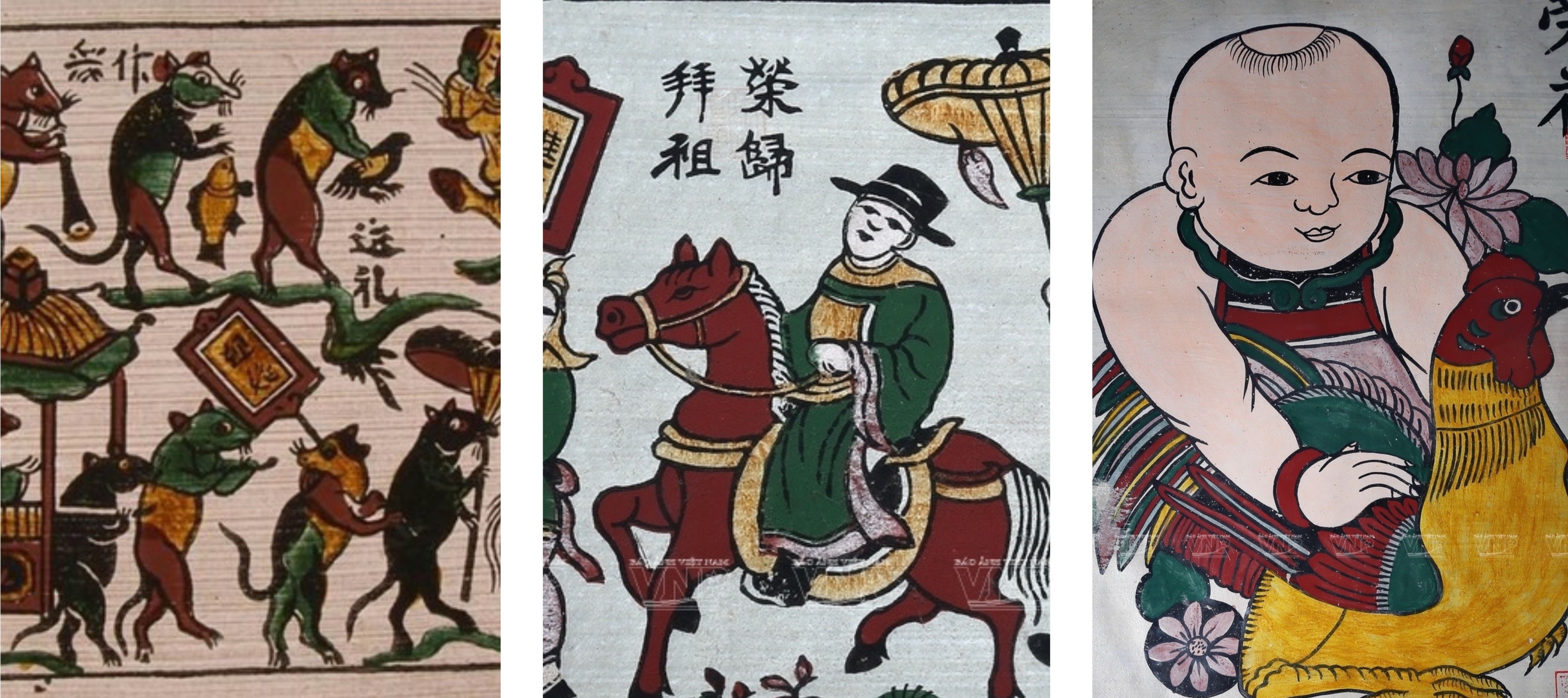
14. Architecture
The traditional architecture reflects a deep connection with nature, spirituality, and community. From the curved roofs of communal houses to the stilt homes of ethnic minorities, each structure reflects its environment and supports the local way of life. In the Red River Delta, wooden houses with tiled roofs and open courtyards offer shade and airflow. In mountainous areas, stilt houses rise above the ground to avoid floods and wild animals. Temples, pagodas, and ancestral halls are often richly decorated with carvings, dragons, and symbolic patterns, showing respect for gods and ancestors.
15. Modern Vietnamese Culture
Vietnam today is dynamic and youthful, yet deeply rooted in tradition. Urban life is fast-paced, with growing influence from global trends in fashion, media, and technology. Still, family values, community, and cultural pride remain strong. From wearing ao dai on special occasions to sharing meals during festivals, modern life in Vietnam respects the old while embracing the new.
16. Folk Games and Traditional Sports
Traditional sports in Vietnam are more than games – they are part of festivals, village pride, and cultural heritage. Activities like wrestling, boat racing, and bamboo pole dancing are often performed during Tet and local celebrations. These sports test not only strength and agility but also teamwork and endurance. In rural areas, children still play folk games such as tug of war or kite flying, passing down joy through generations. Martial arts, especially Vovinam, also reflect national spirit, combining physical discipline with mental strength.
17. Drinking Culture in Society
Drinking plays an important role in Vietnamese social and business life. Beer is popular in cities, often enjoyed at casual restaurants where people gather after work to relax and connect. In rural areas, rice wine is served during festivals, weddings, and family meals, seen as a sign of respect and hospitality. In both daily life and business settings, sharing a drink is a way to build trust, strengthen relationships, and celebrate together.
- Check out Hanoi’s beer street
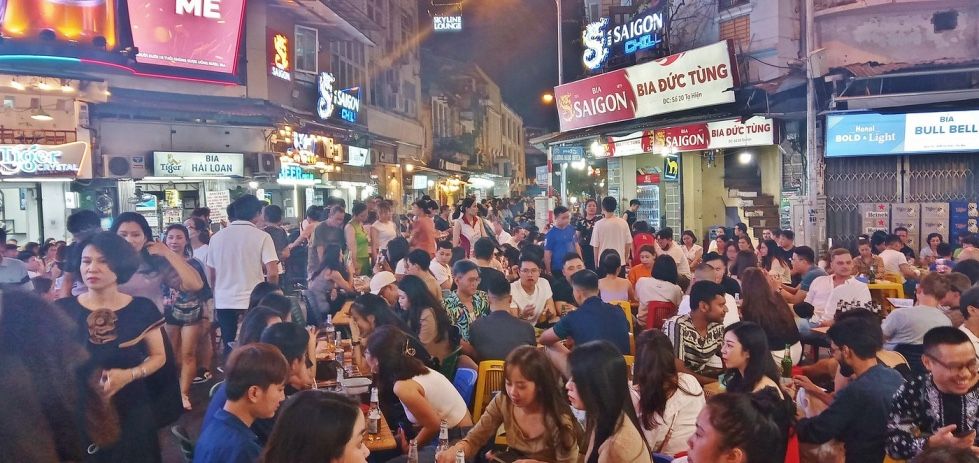
18. Regional Festivals and Public Holidays
Vietnam has many traditional festivals rooted in culture, family, and the natural seasons. The most important is Tet (Lunar New Year), a time for family reunions, honoring ancestors, and wishing for luck. Other major holidays include the Mid-Autumn Festival, where children carry lanterns and eat mooncakes, and the Hung Kings’ Temple Festival, which honors Vietnam’s legendary founders. Local festivals vary by region, often linked to farming, fishing, or religious beliefs, offering a vibrant look into Vietnamese life and tradition.
Learn About Vietnam’s culture at these museums
Vietnam Museum of Ethnology
(Hanoi) – A must-visit for understanding the cultures of Vietnam’s 54 ethnic groups, with traditional houses, costumes, tools, and festivals on display.
Vietnam National Museum of History
(Hanoi) – Offers insight into Vietnamese history, ancient dynasties, and cultural development over thousands of years.
Temple of Literature
(Hanoi) – Vietnam’s first university and a symbol of Confucian values like education and respect for learning.
Hue Imperial City
(Hue) – Once the capital of the Nguyen Dynasty, it showcases royal architecture, rituals, and Confucian traditions.
Hoi An’s Historic Town
(Hoi An) – A well-preserved heritage site where you can experience old Vietnamese customs, lantern festivals, traditional crafts, and ancestral worship.
Duong Lam Ancient Village
(near Hanoi) – A countryside village with centuries-old houses, communal temples, and farming traditions still alive today.
Traditional Craft Villages
Such as Bat Trang (ceramics), Van Phuc (silk), or Dong Ho (folk paintings), where you can see artisans at work and learn about age-old techniques.
Ethnic Minority Villages
(Sapa, Ha Giang, Dak Lak, etc.) – Visiting these remote areas allows you to witness unique customs, traditional clothing, and the community life of various ethnic groups.
Mekong Delta Villages
Experience life on the river, local customs, folk music, and floating markets rooted in Southern traditions.
Vietnamese etiquette tips every travelers should know
Respect for Elders
It’s an important part of the Vietnam’s culture that places high importance on age. Always greet older people first, let them speak or eat before you, and show deference in both words and actions. It’s a simple way to show respect and build goodwill.
Dress Modestly
Take it serious! When visiting temples, pagodas, or rural areas, avoid wearing revealing clothes. Cover your shoulders and knees, and consider bringing a light scarf or shawl. Modest dress is a sign of respect for both culture and religion.
Take Off Shoes Indoors
It’s common to take off your shoes before entering a home, a traditional guesthouse, or some local shops. If you see shoes left outside, follow the cue and do the same.
Dining manners
Wait for the eldest at the table to start eating before you do. Vietnamese meals usually follow a shared, family-style format. Use serving utensils if available. Never stick chopsticks upright in rice—it brings bad luck—and avoid pointing with them.
Calling for Service
In many Vietnamese restaurants, staff won’t come unless called. A polite way to get attention is to say “Em ơi!” (Hey you!) with a smile. It’s a normal and acceptable way to call someone younger or in a service role.
Tipping
Tipping isn’t mandatory in Vietnam, but it’s appreciated. In casual eateries, rounding up the bill is enough. In nicer restaurants, a 5 – 10% tip is common. You can also tip guides, drivers, or hotel staff a small amount as a gesture of thanks.
Polite Communication
Speak gently, never talk with people while pointing at them, avoid raising your voice, especially in public or formal settings. Vietnamese people value calmness and humility in conversation. Smiling is a powerful tool – it shows kindness and often leads to better interactions.
Conclusion: The Vietnam’s Culture and Traditions
An interesting thing about Vietnamese traditions is how seamlessly they blend into daily life. They’re not just echoes of the past, but living practices you’ll encounter everywhere – from ancestral altars glowing quietly in family homes to street festivals filled with music, color, and laughter. These customs reflect the heart of Vietnamese culture: deep respect for family, harmony with nature, and a strong connection to community. Whether you’re wandering through a quiet village or sharing a meal in a city home, tradition is always near, carried in gestures, flavors, and the stories people proudly pass on.

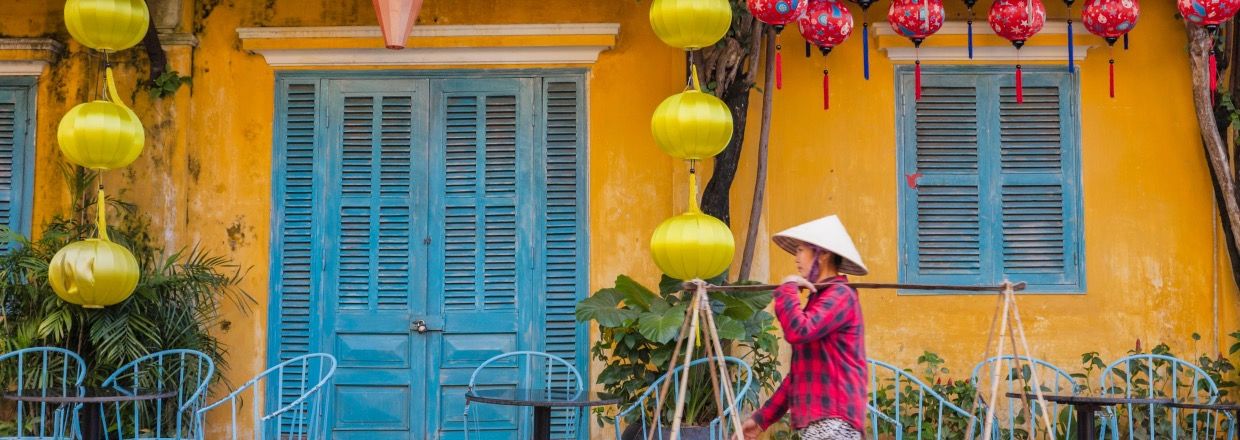
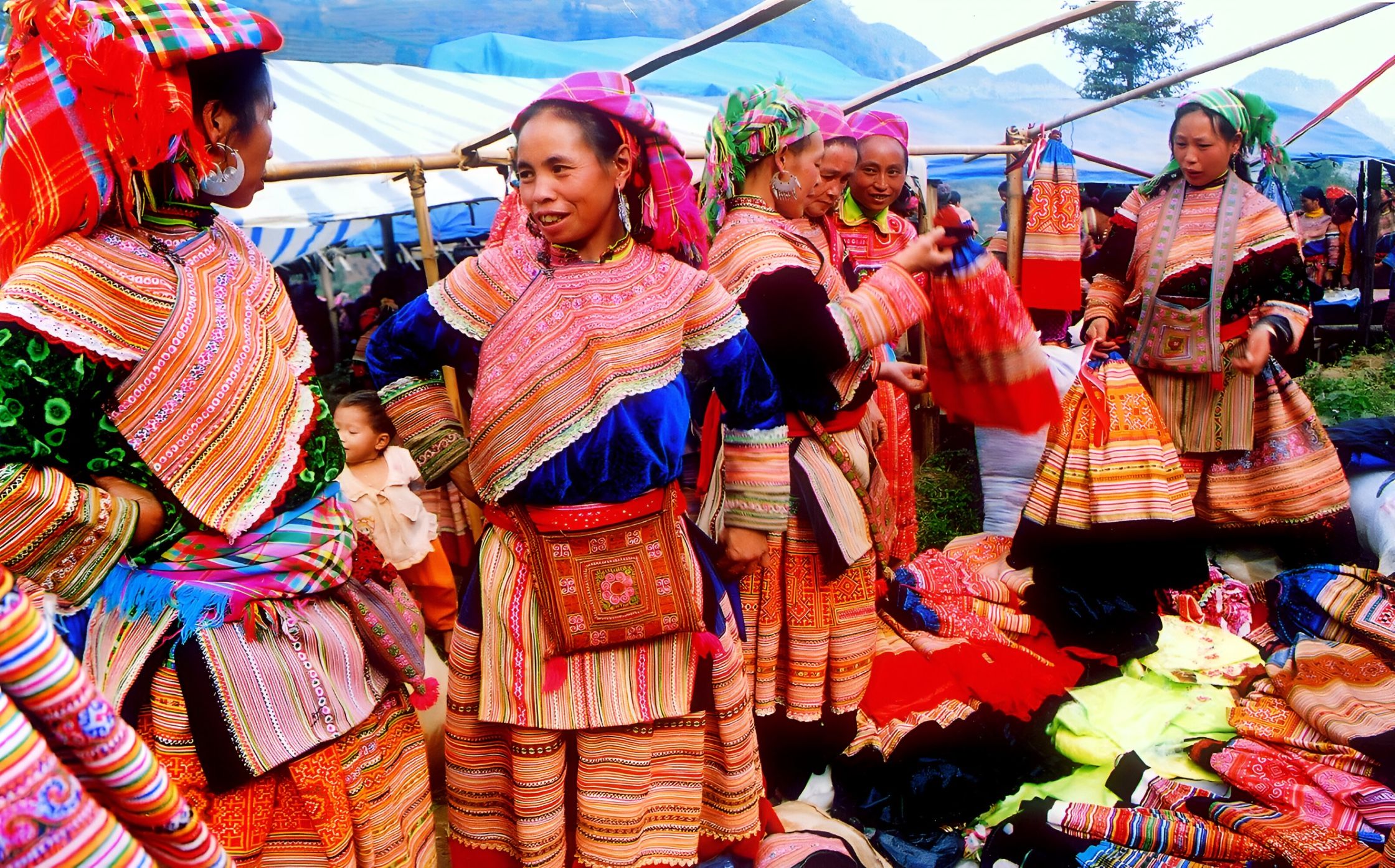
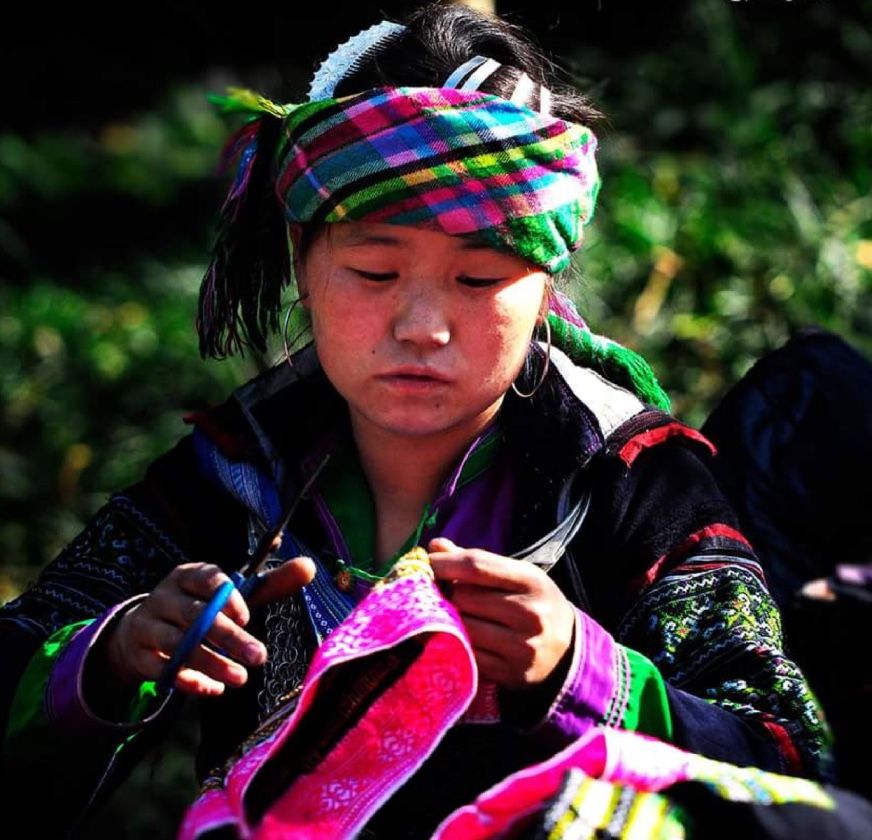
You May Also Like
Long Coc Tea Hills in Phu Tho: A Hidden Photography Spot Near Hanoi
Long Coc Tea Hills in Phu Tho is a breathtaking hidden gem in northern Vietnam, ...
The Ultimate Guide For Visiting Visit Vietnam In February: Weather, Festivals & Itineraries
Imagine walking through Hanoi’s Old Quarter as peach blossoms bloom in doorways, or sitting by ...
Toilets in Vietnam: A Traveler’s Guide for Squat Toilets, Public Bathrooms & Flushing Paper
Let’s be honest—when you travel, toilets matter more than you expect. In Vietnam, they quickly ...
20 Traditional Vietnamese Folk Games
Traditional folk games in Vietnam are more than just childhood pastimes. They are the living, ...
How to Register a Company in Vietnam (2026 Guide)
Foreign investors planning to do business in Vietnam face a multifaceted legal system and bureaucratic ...
Visiting Vietnam in January 2026: Weather, Costs, Festivals & Travel Tips
I visited Vietnam in January 2026, and I still remember the crisp, cool air in ...